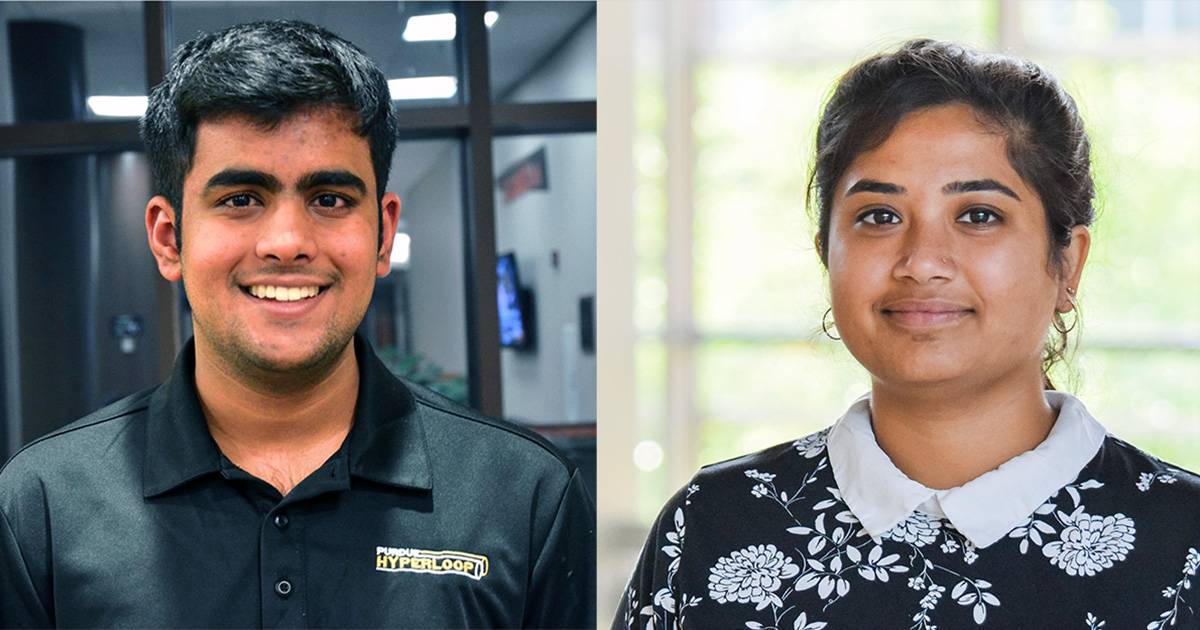AAE students to develop new satellite remote sensing method for Earth monitoring, with NASA FINESST grants

Two graduate students in the School of Aeronautics and Astronautics have separately received major funding support from NASA to develop new methods for monitoring the Earth and its climate.
Siddharth (Sidd) Subramanyam and Archana Choudhari will both be assessing if Signals of Opportunity (SoOp) methods can be used to take measurements on Earth’s surface. Their principal investigator (PI), professor Jim Garrison, is a pioneer in this field.
Choudhari will look at root-zone soil moisture levels, which can provide warning of flood or drought. Subramanyam will explore techniques and methods of orbit determination of SoOp sources, that would enable a future SoOp altimetry mission. Sea surface height measurements can be used to show dynamics of coastal zones, including erosion, sea level rise, and tsunamis.
The prestigious Future Investigators in NASA Earth and Space Science and Technology (FINESST) program has granted each of them $50,000 per year to study these methods, for up to three years. The program’s selection rate is less than 15% percent.
The SoOp approach is to analyze signals already being reflected off Earth from high-powered communications satellites. Variations in the reflected signal can contain information about the Earth’s surface. By forgoing the large transmitters necessary for traditional radar, the SoOp method can greatly reduce the satellite’s size and the total mission cost.
“The SoOp technique also allows measurements to be made using frequencies that are better tuned to the specific physical processes being observed, but which have not been utilized in the past due to interference from the communications transmissions,” Garrison says. “In other words, SoOp can use something that normally would be considered interference."
Garrison is principal investigator on SNoOPI, a NASA mission to prove out SoOp technology on the cubesat scale.
Choudhari’s research proposal is titled, “Experimental Demonstration of Multi-frequency, Multi-Polarization Signals of Opportunity Sensing of Root-Zone Soil Moisture.” Subramanyam’s is “Orbit Determination for Inland and Coastal Altimetry Using Wideband Signals of Opportunity (SoOp).”
